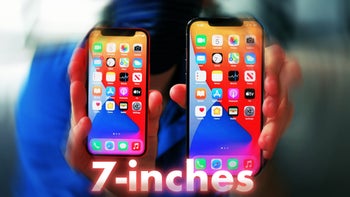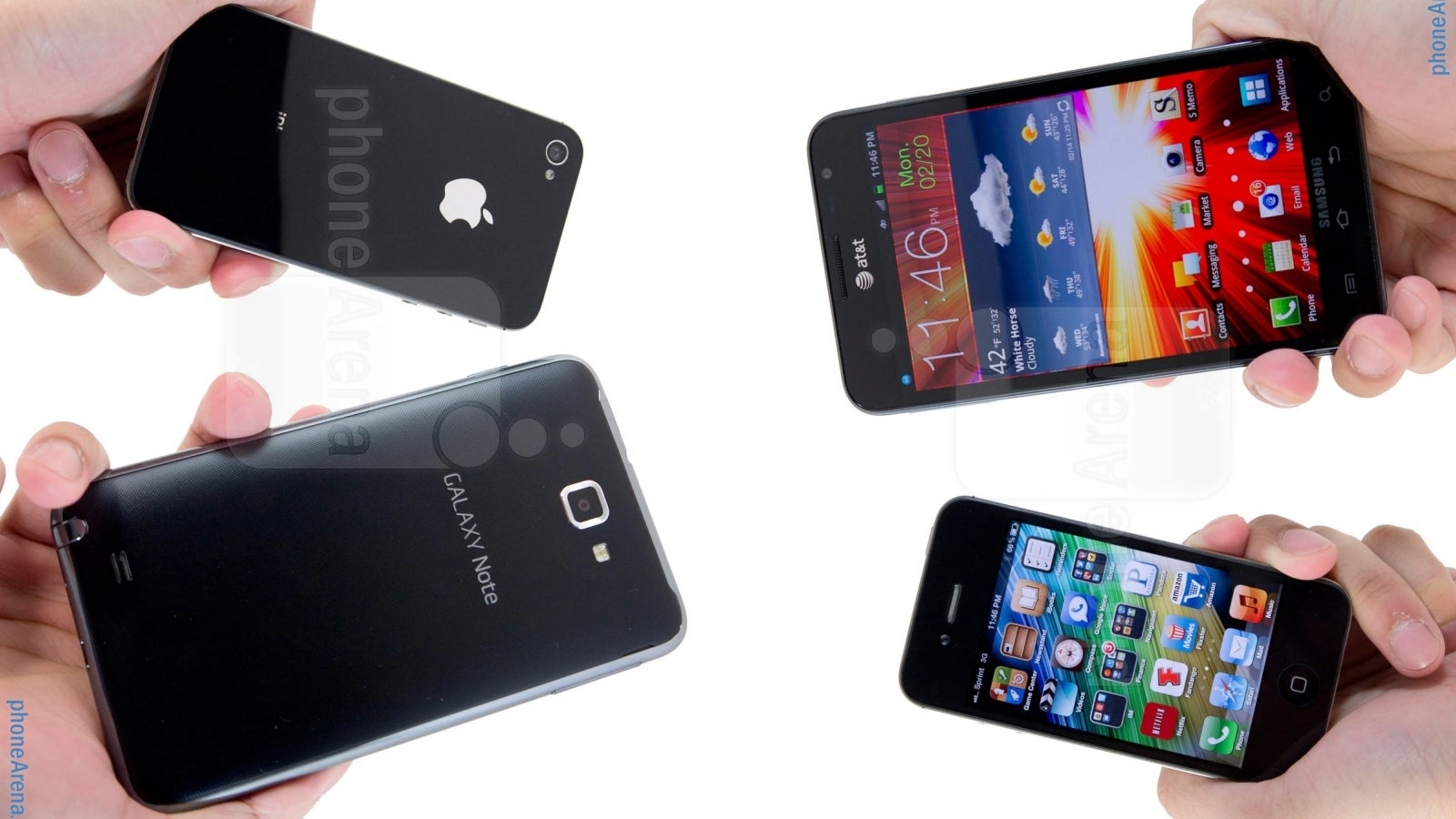Steve Jobs’ Apple is changing big time! Largest ever ~7-inch iPhone Ultra means no folding iPhone
This article may contain personal views and opinion from the author.

In 2010, responding to a question about whether Apple could've done anything to avoid the antenna issues with iPhone 4, Steve Jobs said that making a phone so big "you can't get your hand around it" would help, but "no one's going to buy that.”
Steve Jobs and I don't have too many things in common but the one belief we share is that phones shouldn’t be as big as small tablets. And while our (that’s me and Steve, people) everlasting affinity for smaller phones remains intact even today, judging by sales, the general public seems to disagree with us (Jobs, me, same sentence).
And guess what? It’s almost time for the next big thing at Apple, and while iPhone 15 Pro Max is expected to retain the 6.7-inch display size introduced in 2020, according to multiple reliable sources, the 2024 iPhone 16 Pro Max/Ultra is now expected to grow to ~7-inches, or 6.9 if we must be precise! We also expect the 6.1-inch iPhone to switch to a 6.3-inch screen size.
- 3.5-inch iPhone (3G, 3GS, 4, 4S)
- 4.0-inch iPhone (5, 5S, 5C)
- 4.7-inch iPhone (6, 6S, 7, 8)
- 5.8-inch iPhone (X, XS)
- 6.1-inch iPhone (XR, 11, 12, 13, 14, 15)
- 6.5-inch iPhone (XS Max, 11 Pro Max)
- 6.7-inch iPhone (12 Pro Max, 13 Pro Max, 14 Pro Max, 14 Plus, 15 Pro Max)
- 6.9-inch iPhone (iPhone 16 Pro Max/Ultra, rumored)
So, why is Apple turning the iPhone into an iPad mini competitor, how big is too big, and does the ~7-inch iPhone Ultra mean we might never get a folding iPhone? Let’s take an early look.
Apple is changing: The ~7-inch iPhone 16 Ultra was always coming, but will Tim Cook & Co finally make the huge iPhone truly useful, or are they simply out of ideas?
A phone should feel great in the hand, and more importantly, it should be easy to use with this magical device we all carry called the horizontally opposed thumb. Phil Schiller, iPhone 5 keynote (2012)
What’s interesting is that starting with iPhone 16 Pro and iPhone 16 Ultra (the vanilla models are expected to retain the current display sizes), Apple will be approaching iPhone the same way the company approaches its MacBook lineup. The MacBook Air should soon be coming in 13 and 15-inch sizes, while the MacBook Pro offers 14 and 16-inch displays. So, there’s a spillover of strategy there.
But the question that pops in my head is: “Do people want a larger iPhone than the already large iPhone 14 Pro Max, or does Apple want to make a larger iPhone because the company needs more space to make the phone better?”. And the answer is… Probably both.
Of course, a larger display is a larger display, but with the increase in physical size, Cupertino would get a chance to improve iPhone in a variety of other ways (I’m not saying they necessarily will). A larger phone would allow for a larger battery, a more comprehensive cooling solution, larger camera sensors, and whatever else Tim Cook & Co have in mind for the future of the iPhone.
It’s no secret - smartphones are slowly but steadily reaching their peak abilities now, which means the next logical step is to either switch to a different form-factor (Apple doesn’t seem interested), or… just keep scaling up/making them larger, so the hardware inside can get a little bit better. But can Apple surprise us with some expected/unexpected new software/hardware features?
iOS 17 to turn iPhone into a nightstand clock; 6.9-inch iPhone 16 Ultra to justify its size with brand new buttons, new cameras, and (hopefully) a new design
But what would make a 6.9-inch iPhone truly useful and justify carrying an even larger brick in your pocket? A slightly larger display for watching YouTube videos can’t be all it is, right? Well, if the leaks and rumors are to be believed, larger iPhones might finally begin to offer features that take advantage of the big displays
This will likely include some surprising new features but also some that Android phones have had for a while now. As usual, Apple is late to the game, but perhaps Cupertino can do it better. For example, widgets and Always-on displays came to iPhone years after they were introduced to Android, but Apple’s take on the same features seems more advanced and sleeker…
- According to Bloomberg’s Mark Gurman, Apple is about to turn iPhone into a Google Nest Hub-like Smart Display; iOS 17 is now expected to add support for a special Always-on display mode in horizontal view, which might mimic some Google Nest Hub functions (like allowing you to control your smart home devices); suddenly, a larger 6.9-inch iPhone fits Apple’s narrative quite well; although the reports don’t mention it, I also expect Apple to introduce a new version of its MagSafe charger that includes a stand, so your iPhone looks and feels like a proper Smart Display when not in use (Pixel Tablet much?)
- Android-like multitasking might also finally be coming to iPhone, and while we haven’t heard many rumors about that, the addition of interactive widgets and the upcoming support for Smart Display might be a signal that Apple could finally add proper multitasking to the iPhone, allowing you to open and view two (or more) apps at the same time
- iPhone 16 Ultra is also highly likely to get the solid state buttons we expected to see on iPhone 15 Pro; those also require more space than traditional buttons, which might explain the increase in size
- We’ve heard rumors about ~1-inch primary camera sensor coming to iPhone, which would also require more space; of course, cameras are a big focus of all smartphones to today, and Apple is no different, in fact the periscope zoom camera coming to iPhone 15 Pro max is apparently impossible to fit into the 6.1-inch iPhone 15 Pro, which is why the latter will miss on this tech; iPhone 16 Pro is expected to add the periscope lens but also get a larger 6.3-inch display
- This one’s a wild card at this point, but it’s also possible that the larger iPhone Ultra might finally bring a big redesign to the iPhone lineup, which has been largely unchanged for a long time now; if you ask me, larger iPhones call for more curves - I find the squarish iPhone 14 Pro Max rather uncomfortable to use; so perhaps we’re in for an iPhone XS throwback?
The smaller 6.1-inch iPhone Pro is also expected to grow in size. iPhone 16 Pro’s display should measure 6.3-inches, while the larger body should allow Apple to add a periscope zoom camera to the smaller Pro model. It’s also important to note that the display aspect ratio of the iPhone 16 Pro and iPhone 16 Ultra might change too. The phones are expected to be taller but not necessarily narrower, which is why it’s hard to predict their aspect ratio. iPhone 14 Pro and iPhone 14 Pro Max have 19.5:9 displays. The next logical move might be 20:9?
~7-inch iPhone 16 Ultra means we might never see a folding iPhone; could Apple’s AR/VR headset make big iPhones obsolete?

How times have changed... Apple simply had to enter the screen measuring contest if it wanted to keep selling more flagship phones.
In the end, I’ll keep things simple by giving you some food for thought in the shape of bullet points (because why not)...
- iPhone 16 Ultra will be outrageously big but people with 6.7-inch iPhones are unlikely to be shocked by a 6.9-inch phone, while the new 6.3-inch “small” iPhone 16 Pro is actually a great idea for those who don’t want to go (very) big; in other words; it’s safe to assume that not much will change - people will probably keep buying larger iPhones
- With a 6.9-inch iPhone 16 Ultra scheduled to arrive in 2024, where to from now on, Apple? A 7-inch iPhone, a 7.5-inch iPhone? Of course, another "logical" step would be a folding iPhone but think about it - if Apple’s massive ~7-inch iPhone doesn’t fold (and it won’t), then are we ever getting a foldable iPhone? Perhaps That's Apple's way of telling us to "forget about it"...
- And this one’s my personal favorite peek into the future, but if Apple believes in AR/VR, isn't the headset expected to debut at this years’ WWDC (June 5) eventually going to make phones with large displays obsolete? I recently made myself familiar with a pair of AR glasses called NReal Air, which not only allow you to see a massive version of your iPhone’s display in AR but also let you use a full-blown three-monitor setup on your MacBook; why would I want a 7-inch iPhone when I can have a 200-inch screen in front of me?
One thing's for sure, Apple’s AR/VR headset won’t cost $400 (which is the price of the NReal Air glasses), so larger iPhones might be the only affordable way to get the largest iPhone display for a while. Let’s just hope the 6.9-inch iPhone 16 Ultra makes proper use of the larger display. Android it, Apple.










Things that are NOT allowed: